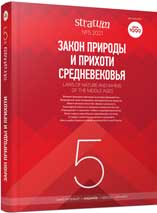Дрок испанский (Spartium junceum L.) в традиционной культуре контактных зон Адриатического и Ионического побережья Балкан
Spanish Broom (Spartium junceum L.) in the Traditional Culture of the Contact Zones of the Adriatic and Ionian Coasts in the Balkans
Author(s): Alexander A. Novik, Marina V. DomosiletskayaSubject(s): History, Customs / Folklore, Cultural Anthropology / Ethnology
Published by: Издательский дом Stratum, Университет «Высшая антропологическая школа»
Keywords: Balkans; broom; Albanians; Croats; Greeks; ritual practices; spinning and weaving; ethnic contacts; phytonymy;borrowings;
Summary/Abstract: The paper deals with the special status of broom in the Balkans and its practice in different contact areas of the peninsula. It is a symbolic plant on the Adriatic coast of Croatia (Zadar), with a sacred status for the local Albanians (Arbënesh). It plays an extremely great role as a ritual plant during the celebration of Holy Virgin from Loreto. That’s what separates Arbnesh from their neighbor Croatians, who take it only for pragmatic use — weaving and manufacturing rough textile. On the Ionic coast (in Labёria, Albania) broom is used for weaving and spinning of coarse fabric. But ideal local conditions helped the Albanians to produce specific thin broom fabric. And finally, in the Albanian-Greek contact zone of Himara which is situated in the best enabling climate environment, there is lack of serious attention to broom — its role is quite insignificant. The authors analyze the mechanisms of the introduction of the plant, which is important for the traditions, into the cultural codes of the Balkan peoples, consider all local Balkan phytonyms, which makes it possible to interpret anthropological facts through linguistic material. The research is based on long-term field observations conducted in 2008—2019, as well as on the analysis of ethnological, folklore and historical materials. The historical approach makes it possible to reveal the fundamental laws of the genesis of cultural memory and the evolution of ethnic identity.
Journal: Stratum plus. Археология и культурная антропология
- Issue Year: 2021
- Issue No: 5
- Page Range: 411-421
- Page Count: 11
- Language: Russian
- Content File-PDF

